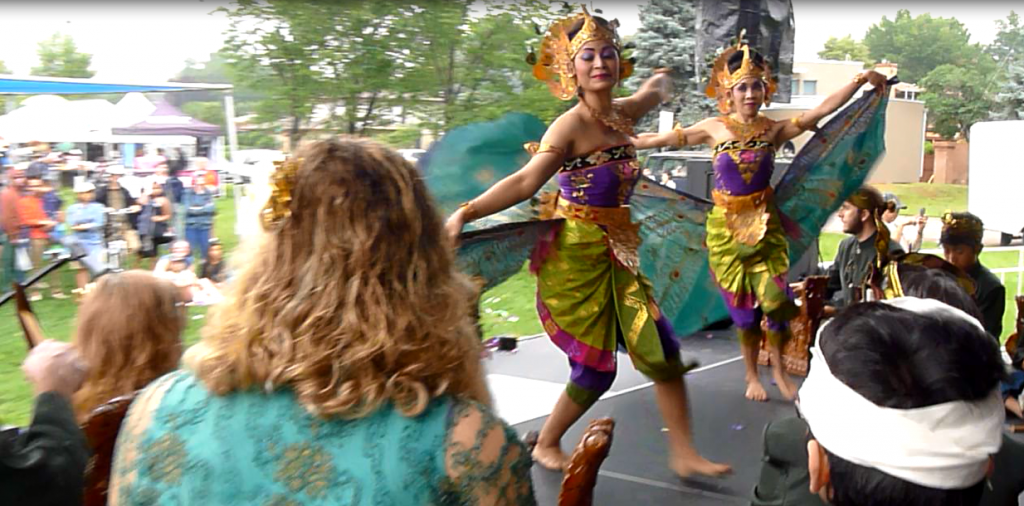I fell in love with the mesmerizing music of Gamelan Tunas Mekar the first time I heard it. The Denver-based group was my introduction to the rich traditional music of Bali and Indonesia, with its intricate patterns and precise time signatures. It’s a music that’s propelled by an ensemble of percussion instruments and flutes: Bells, drums, gongs, xylophones and metallophones.
The music is groove-y to the max, and hypnotic with its percussive repetition and variations. Gamelan Tunas Mekar is really good at performing Gamelan music, and visually they’re dynamic on stage not only because of the orchestra of unique instruments that are arranged on stage, but also because they showcase sinewy, traditional Balinese dancing.
The group is celebrating its 25th anniversary this year. Most of the members of Tunas Mekar are not from Bali or Indonesia, but the group takes the authenticity of its music seriously. The members have learned from two Balinese masters who’ve passed along their knowledge. Its second master, I Made Lasmawan, moved to Colorado and has been Gamelan Tunas Mekar’s Artist-in-Residence since 1993.
Continue reading
















